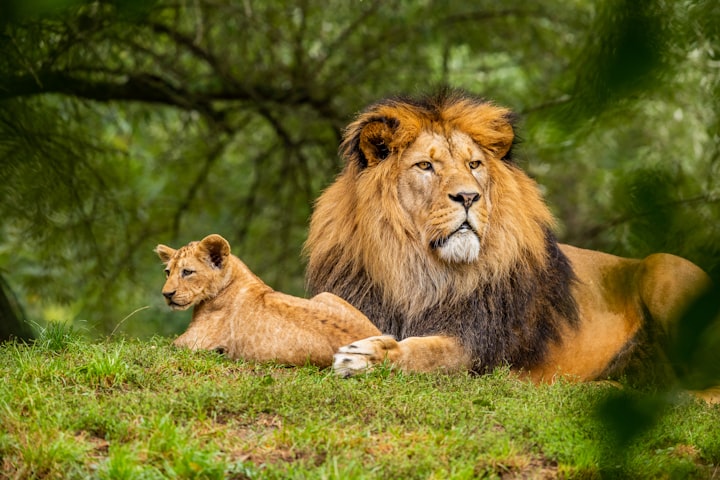Lion Expert Rates 9 Big-Cat Attacks In Movies
Reality Bites: A Wildlife Expert Rates Big-Cat Attacks in Movies

Introduction Big-cat attacks in movies have always been a thrilling spectacle, capturing the imagination of audiences with their intense action sequences and heart-pounding suspense. But just how real are these cinematic portrayals of big-cat encounters? In this article, we dive into the world of big-cat attacks in movies and have a seasoned wildlife expert, Mark Elbroch, with over 20 years of experience studying mountain lions, African lions, and leopards, provide his expert analysis. From the ferocious roars to the jaw-dropping action, we'll explore the realism and inaccuracies in these Hollywood depictions of big-cat behavior.
The Realism of Big-Cat Attacks
Mark Elbroch begins by shedding light on the physiology of cats, emphasizing the importance of their small lungs and the necessity of swift, explosive attacks when hunting. If they fail to connect with their prey quickly, they are likely to give up. This sets the stage for a critical evaluation of how movies portray big-cat attacks.
1. African Lions in Combat
One of the first aspects analyzed is the portrayal of African lions engaging in combat. Mark affirms that the scenes where lions stand up and wrestle are indeed realistic. These encounters typically occur when lions are fighting over territory or pride rights. He also notes that old lions almost always have facial scars from these territorial disputes, making this element true to life.
2. Defensive Postures and Mane Protection
Mark discusses the significance of defensive postures in big-cat behavior. When threatened, a cat may go onto its back, exposing four weapons (claws) pointing up. This defensive position allows them to shred the underbelly of a competitor if attacked from above. The loose skin and the big mane serve as protective measures during these violent exchanges.
3. Jaguar vs. leopard
Mark offers insights into differentiating jaguars from leopards based on their distinct patterns, emphasizing that jaguars have black squares with dots in the middle, unlike leopards. He also dissects a movie scene featuring a pet jaguar and emphasizes that jaguars are unlikely to wander into bars or engage with people, as they are known for their non-aggressive behavior toward humans.
4. Mountain Lion Behavior
Mark evaluates a movie clip featuring a mountain lion kitten, highlighting the significance of its forward ears and calm demeanor. He explains that agitated mountain lions hiss and snort rather than roar. He emphasizes that in a real-life encounter, mountain lions are more likely to exhibit bluster than make actual contact in fights, as self-preservation is paramount.
5. Tiger vs. Human
In a gripping scene, a tiger confronts a human who attempts to jab it with a syringe. Mark explains the concept of "displacement behaviors," where captive animals exhibit stress through biting and clawing. He also discusses the potential effectiveness of drugging a wild animal with a syringe, acknowledging its real-world applicability.
6. Realistic Lion Attack
Mark commends a movie for its realism in depicting a lion attack on a human. He mentions the accurate portrayal of the lion targeting the spine and biting repeatedly, showcasing a lion's true predatory behavior. He, however, acknowledges the high lethality of such an attack.
7. Fear and Focal Lock In a movie clip,
Mark discusses how showing fear to a mountain lion can escalate a potentially dangerous situation. He advises that one should confront a large cat if threatened but also offers insights on breaking a cat's focal lock through loud noises and surprising actions.
8. Tiger Hunt and Tiger vs. Wolf
Mark examines a scene where a tiger takes down a wolf, emphasizing the importance of silence during hunting. He notes the significance of body weight in big-cat hunting and explains that tigers swim proficiently. He also evaluates a scene where a tiger confronts a human and provides tips for self-preservation in such situations.
9. Mountain Lion vs. Bear
Mark analyzes a movie clip featuring a mountain lion attacking a bear cub. He explains that mountain lions would prefer not to engage with adult brown bears and would likely flee. He also comments on the mismatch between the open terrain depicted and typical mountain lion habitats.
Conclusion
In conclusion, this article has delved into the world of big-cat attacks in movies, providing expert analysis from wildlife specialist Mark Elbroch. From African lion combat to tiger hunts and mountain lion behavior, each movie scene has been dissected for its realism and accuracy. While Hollywood often takes creative liberties, there are moments of authenticity that deserve recognition. Mark's insights offer a unique perspective on the portrayal of big cats in cinema, allowing viewers to appreciate the blend of excitement and realism in these films. Whether it's a thrilling chase or a deadly encounter, these cinematic depictions continue to captivate audiences with their awe-inspiring spectacle.





Comments
There are no comments for this story
Be the first to respond and start the conversation.